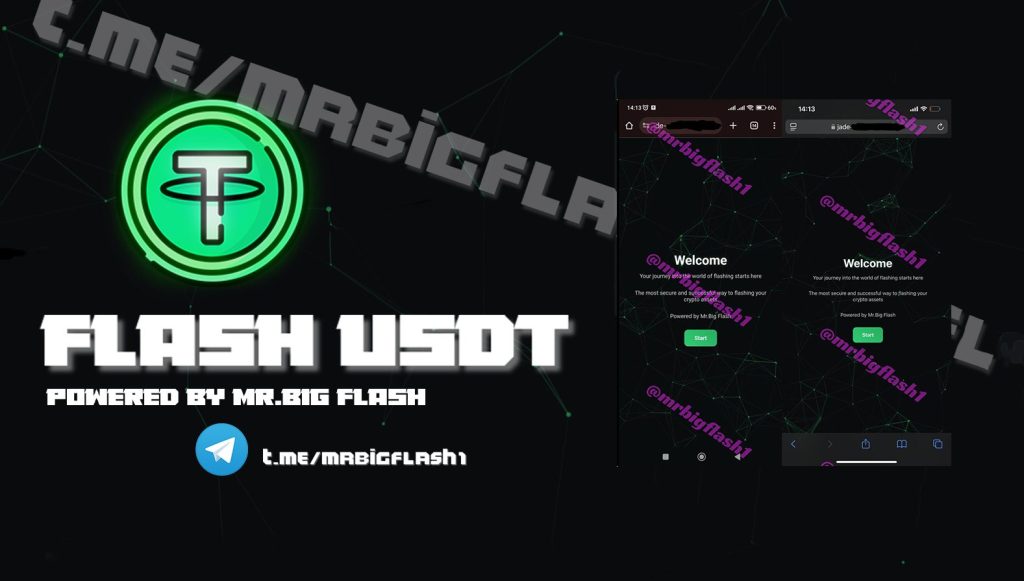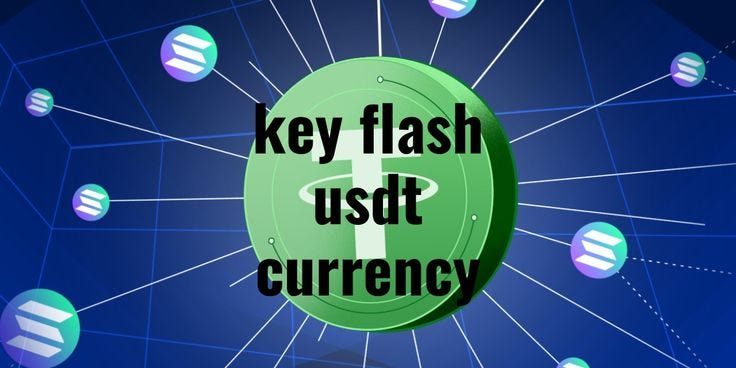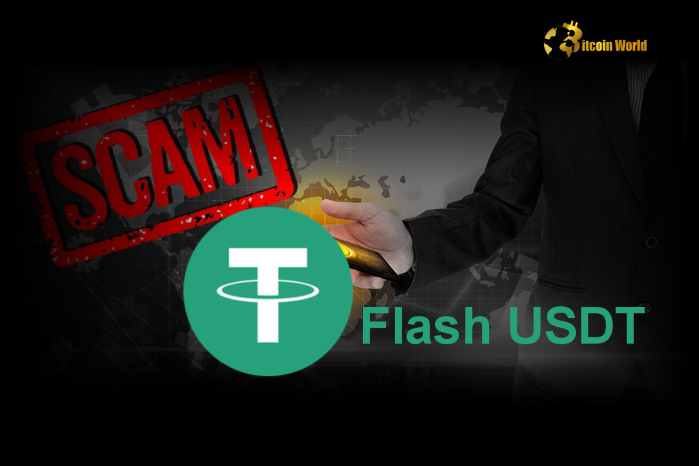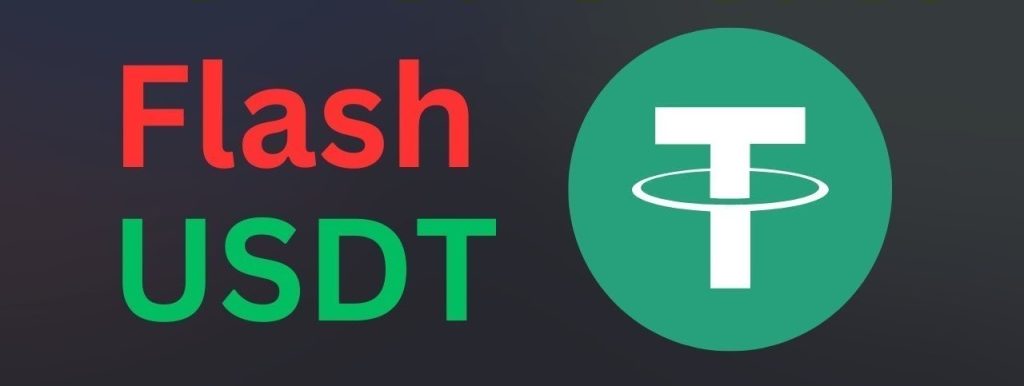Table of Contents
How Flash USDT Works
How Flash USDT Works: A Simple Explanation
The world of cryptocurrency can feel a bit like a maze, right? Lots of technical terms and new ideas. One term you might hear, especially if you’re looking into crypto recovery or have been a victim of online schemes, is “Flash USDT.” It sounds fancy, but let’s break down exactly how Flash USDT works in a way that’s easy to understand.
First off, think of regular USDT (Tether) as digital US dollars. It’s a stable coin, meaning its value is designed to stay pegged to the US dollar. So, 1 USDT should always be worth about $1. People use it because it lets them move money quickly on the blockchain without worrying about big price swings like Bitcoin or Ethereum.
Now, “Flash USDT” is a different beast entirely. It’s not actually a real, spendable cryptocurrency like regular USDT. Instead, it’s more like a temporary, simulated transaction. Imagine sending a message to a friend that looks like a receipt for money, but the money never actually left your bank account, and it disappears from their statement after a short while. That’s a good way to picture how Flash USDT works.
Here’s the step-by-step breakdown:
When someone talks about “Flash USDT,” they are usually referring to a specific type of software or a method that creates a transaction that appears on a crypto wallet’s balance, but it isn’t truly confirmed on the blockchain in the same way a real transaction is.
Next, think about why this “fake” transaction happens. It’s usually done using special software. This software manipulates how the blockchain sees the transaction, at least for a little while. It sends a signal that says, “Hey, this wallet just received X amount of USDT!” But, the underlying code or the way it’s processed on the network means that this “flashed” amount isn’t real.
Then, what happens after the “flash”? The key thing to remember about how Flash USDT works is its temporary nature. These flashed funds will typically disappear from the wallet after a certain period. This could be minutes, hours, or even a few days, depending on how the “flash” was set up. The transaction isn’t truly recorded or settled on the blockchain’s permanent ledger. This means you can’t actually spend, transfer, or convert this “Flash USDT” into other real cryptocurrencies. It’s a phantom balance.
After that, consider the practical side. If you see “Flash USDT” appear in your wallet, it’s often a sign of something suspicious. Legitimate crypto transactions are permanent once confirmed. They don’t just vanish. The goal of those who use “Flash USDT” is usually to deceive. They might try to convince someone they’ve sent funds, only for those funds to disappear later, leaving the victim with nothing.
Finally, it’s crucial to distinguish this from legitimate, fast transactions. Real USDT transactions on fast networks like Tron (TRC20) or Solana can be very quick, often completing in seconds. This speed is a true feature of the blockchain technology they use. “Flash USDT,” on the other hand, is not about legitimate speed; it’s about creating a fleeting illusion of a transaction.
So, when you hear “Flash USDT,” remember it’s not a genuine cryptocurrency you can use or recover in the traditional sense. Understanding how Flash USDT works is your first line of defense against potential crypto scams. Always verify transactions on the official blockchain explorer, not just by looking at your wallet balance, to ensure any incoming funds are real and permanent.
Flash USDT Online

Flash USDT Online: What You Need to Know
When you’re navigating the crypto world, especially online, you might come across the term “Flash USDT Online.” It sounds like it could be a legitimate, speedy way to handle digital money, but it’s crucial to understand what it truly means. In short, “Flash USDT Online” usually refers to the deceptive practice of creating fake USDT transactions that appear on a wallet or platform for a short time.
Think of it like this: someone uses a clever trick to make it look like real USDT has landed in an online wallet or exchange account. This is usually done through specialized software or services that promise to “flash” funds. They create a temporary illusion.
Next, consider how this plays out online. Scammers often use “Flash USDT Online” to trick people. They might show you a screenshot or even demonstrate a balance appearing in a wallet online. The idea is to convince you that they have sent you money, or that you have received a large sum, to then pressure you into sending real money back to them, or to pay a “fee” to access these fake funds.
Then, what’s the catch with these online appearances? The key is that the “Flash USDT Online” isn’t actually confirmed on the real blockchain. It’s not processed and secured in the same way legitimate cryptocurrency transactions are. Because of this, the “flashed” amount is temporary. It will disappear. It’s like a mirage – it looks real for a moment, but it’s not.
Finally, always be wary. If someone promises you “Flash USDT Online” or asks for money in exchange for these “flashed” funds, it’s a huge red flag. Real cryptocurrency transactions are permanent once confirmed and don’t vanish. Your best defense is to always verify any incoming funds directly on a reputable blockchain explorer. Don’t trust what you simply see on a wallet screen if someone else is presenting it to you, especially if it involves “Flash USDT Online.”
Key Flash USDT Currency

Key Flash USDT Currency: A Crucial Distinction
When we talk about “key Flash USDT currency,” it’s important to understand there isn’t a real currency called “Flash USDT.” Instead, this term points to the deceptive way fake transactions are made to appear like actual USDT. It’s a critical distinction, especially if you’re trying to spot a scam.
Regular USDT, or Tether, is a well-known stablecoin. It’s designed to hold a stable value, usually pegged to the US dollar. This means 1 USDT is generally worth $1. People use real USDT to move value quickly across different blockchain networks, like Ethereum (ERC-20), Tron (TRC-20), or Binance Smart Chain (BEP-20). These are the real, established blockchain networks where legitimate USDT exists and operates.
Next, let’s consider “Flash USDT.” Unlike real USDT, “Flash USDT” isn’t a specific, tradable cryptocurrency. It’s a temporary, artificial entry. It’s not backed by any real assets, and it doesn’t represent actual value that can be spent or exchanged. This “flashed” amount is simply a deceptive visual on a wallet balance.
Then, what makes it “key” in this context? The “key” aspect isn’t about its value or utility, because it has none. Instead, it’s “key” because it’s the specific illusion of a currency that scammers use to trick people. They aim to convince victims that they have received a significant amount of money in the form of this fake USDT.
After that, remember the core difference. Real USDT transactions are permanently recorded on the blockchain. Once confirmed, they are irreversible and can be verified by anyone. “Flash USDT,” however, is not truly recorded on the blockchain in a way that gives it real value or permanence. It’s like a temporary note written on a whiteboard that will be wiped away.
Finally, the takeaway is simple: There is no “key Flash USDT currency” that holds actual value. Any mention of it should immediately raise a red flag. Always remember that legitimate cryptocurrency, including real USDT, behaves predictably: it’s permanent, verifiable, and truly spendable. If it vanishes or can’t be used, it was never real currency to begin with.
Best Flash Software

Best Flash Software”: Understanding the Reality
When people search for the “best flash software” in the crypto world, they often have a misunderstanding of what this type of software actually does. It’s crucial to be clear: there isn’t a “best” legitimate software for “flashing” cryptocurrency. In the context of “Flash USDT,” this kind of software is usually part of a scam or a deceptive practice.
Think about it this way: real, legitimate cryptocurrency transactions are processed and confirmed on public blockchains. These blockchains are secure and transparent. Once a transaction is confirmed, it’s permanent and irreversible. There’s no “software” that can genuinely create a temporary, yet spendable, crypto balance that then vanishes. That’s simply not how blockchain technology works.
Next, what does “flash software” actually refer to then? This term typically points to programs or scripts designed to manipulate how a crypto wallet or a blockchain explorer displays a balance. This software creates a visual illusion. It makes it look like a certain amount of USDT (or another crypto) has arrived in a wallet, even though the real, underlying transaction has not been fully confirmed or properly recorded on the blockchain.
Then, why would anyone create or use such software? The primary reason is deception. Scammers use this “flash software” to trick people into believing they’ve received funds. They might “flash” an amount to a victim’s wallet to convince them they’ve fulfilled a payment, or to entice them to send real money, perhaps as a “fee” to unlock the fake funds. Since the “flashed” amount isn’t real, it cannot be spent, withdrawn, or traded. After a short period, the temporary visual entry disappears from the wallet.
After that, consider the serious risks. Searching for or attempting to use “best flash software” puts you in a very vulnerable position. These programs are often fronts for malware, phishing attempts, or outright scams designed to steal your real crypto or personal information. There’s no legitimate financial gain to be made from them. Any platform or individual promoting “flash software” as a way to get “free” or temporary crypto is almost certainly involved in fraudulent activity.
Finally, the clear message is this: There is no “best flash software” that provides a legitimate service for sending or receiving real, usable cryptocurrency. Reputable crypto exchanges and wallet providers operate on the true principles of blockchain technology. If you encounter any mention of “flash software” that promises temporary but spendable funds, treat it as a massive red flag. Your safest bet is to completely avoid anything labeled as “flash software” for crypto, as it’s almost always a tool for deceit.
Understanding Flash USDT Scams

Understanding Flash USDT Scams and How to Avoid Them
We’ve now covered how “Flash USDT” works, what “Flash USDT Online” entails, and why there’s no such thing as a “key Flash USDT currency” or legitimate “best flash software.” It all leads to one critical point: “Flash USDT” is overwhelmingly a tool used in scams. Understanding these scams is your best defense.
Scammers use the illusion of “Flash USDT” to trick people into believing funds have been received. They might try to get you to pay a “fee” to “activate” these fake funds. Or, they might show you a large “flashed” balance to convince you of their wealth or legitimacy, then lure you into a fake investment scheme where you send real money. Remember, if funds appear in your wallet but you can’t genuinely use them, spend them, or confirm them on a public blockchain explorer, they are not real.
Next, how can you protect yourself? The most important step is always to be skeptical of anything that sounds too good to be true. No legitimate crypto service will “flash” temporary, unusable funds to your wallet and then ask for payment to release them. Be especially cautious if someone you meet online quickly talks about cryptocurrency investments or sends you crypto that seems to vanish.
Then, always verify. If someone claims to send you USDT, check the transaction on a reputable blockchain explorer (like TronScan for TRC-20 USDT or Etherscan for ERC-20 USDT). Enter your wallet address or the transaction ID. If the transaction isn’t permanently recorded there with the correct amount, it’s fake. A genuine transaction will always be visible and stable on the blockchain.
Finally, remember the core principles of crypto security. Never share your private keys or seed phrases with anyone. Use strong, unique passwords and enable two-factor authentication on all your crypto accounts. Stick to well-known, reputable exchanges and wallet providers. By staying informed and practicing careful habits, you can protect yourself from “Flash USDT” scams and navigate the crypto world safely.




